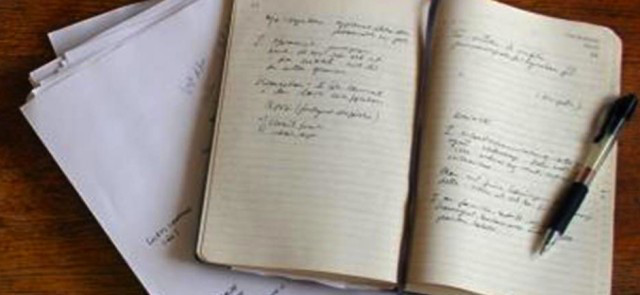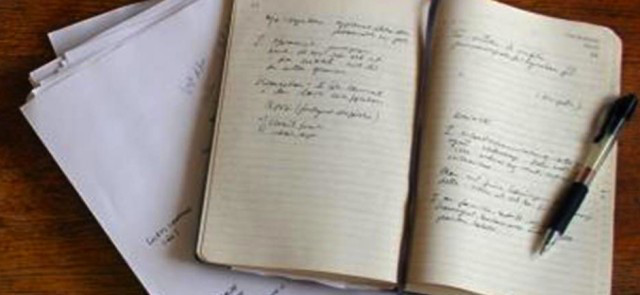“When a lyric stimulates and provokes your senses, you draw the images from your own experiences. You fill [the author’s] words with your stuff. They involve you, so the song becomes about you. That’s the power of sense-bound writing. It pulls the listener into the song by using his own memories as the song’s material.”—Those powerful words by renowned writing coach Pat Pattison in his book “Songwriting without Boundaries: Lyric Writing Exercises for Finding Your Voice” stood out to us. And if you’re also on a quest to improve your songwriting to a point where it makes a personal connection with your listeners, we’re sure Pattison’s words stand out to you as well, and that like us, you are hungry to learn more.
Essentially sense-bound writing encourages you to draw from and incorporate all 7 senses in your writing. Yup Seven! Sight. Sound. Taste. Touch. Smell. Body. Motion. We’re sure you must be wondering about the body and motion senses. Those two were initially foreign to us as well.
The Body Sense or Organic sense is described by Pattison as “your awareness of inner bodily functions, for example, heartbeat, pulse, muscle tensions, stomachaches, cramps, breathing.”
Meanwhile, the sense of Motion or Kinesthetic sense is “roughly your sense of relation to the world around you. When you get seasick or drunk, the world around you blurs—like blurred vision. When the train you’re on is standing still and the one next to it moves, your kinesthetic sense goes crazy. Children spin, roll down hills, or ride on tilt-a-whirls to stimulate this sense,” explains Pattison.
According to Pattison sense-bound writing turns observers into participants. He heralds this style of writing as the “most powerful tool a writer has.”
Notably, Pattison says without effort or training ourselves, we mostly use one sense when we write or are asked to describe an object; sight. But imagine if we evoked our and our readers’/listeners’ other senses as well?
Take for example a description of a room. What if besides the most obvious visual senses of the room, such as its colour and size we focused on “how big does the room sound? How would the table taste if you licked it? How would the rug feel if you rubbed your back on it? How does the kitchen table smell?” asks Pattison.
After all, “the more senses you incorporate into your writing, the better it breathes and dances,” he says.
To sharpen our sense-bound writing ability, Pattison recommends a technique called “object writing,” whereby a real object like a cup of coffee or a rug is used as the focus “to launch you inward to the vaults of your seven senses.”
“Pick an object at random and write about it. Dive into your sense memories and associations surrounding the object. Anything goes, as long as it is sense-bound. Write freely. No rhythm, no rhyme. No need for complete sentences. Use all seven senses: sight, hearing, smell, taste, touch, organic, and kinesthetic,” says Pattison.
Additionally, Pattison says it is important to time your object writing, and at first spend exactly 10 minutes—no more and no less on it daily! Set a timer he says, and stop the second it goes off. This he says will make the exercise a manageable task that you would feel good about doing every day. He also recommends doing it first thing in the morning, so that it can awaken your inner writer who would go through the day with you “sniffing and tasting, snooping for metaphors… writing all day without moving your fingers.”
Pattison adds that object writing should be thought of as sense-bound free association. Noting that there is “no reason to stay loyal to the subject that sets you on a path.” Rather use your senses to “drive the bus,” going where they take you. “The object you begin with,” he says “might only be your starting point. Full right turns or leaps to other places are not only allowed but encouraged.” In fact, he cautions that only staying focused on the object you start with for the whole time may get you bored with object writing in a matter of weeks.
To help you better understand the idea behind object writing, we have included below an object writing sample from Pattison’s Songwriter Without Boundaries, by Cathy Brettell.
“Object: Elevator. Time Limit: 10 minutes
Cathy Brettell: “Breath sucks back into my throat—stomach ball jellies to my toes like an anchor hoisted over a ship—dull brass dragging thick finger of midnight, current’s chain unspools—like roller skates gliding freely—wind sassing back against stubborn waves, black fallen angels bow and thrash in the darkness—thunder twists between sweaty muscled clouds—silver daggers spear the sky horizon, lashing down at the warm sleeping distant halls—sandy upper lip catching foam of a root beer float—eyes widen—thirst deepens, a throat of parched earth guzzles a torpedo stream of charcoal water—stars mirror in the salty crystals—reeds bristle against oncoming Northern winds—smooth moonlit feathers hug against one bony leg for support—a white beam sweeps the coastal blanket—lighthouse calling a lone love—darkness capes around her tall slender body—urchins clinging, bottle bristles against her feet—sunrise begins to touch her—threads of melon flesh across cradled lids—shades of light lift the dreamy nightmare up—rolling it back into heaven’s closet—soft crystal knob pulls shut … (time!)”
Amazing stuff right? So imagine what you can unearth if you let your sense drive your songwriting bus.
This is just the tip of the techniques and coaching you will receive from Pat Pattison from his books, so we highly recommend getting a copy of Pat Pattison’s Writing Better Lyrics and the accompanying Songwriting Without Boundaries exercise guide.
The exercise guide provides several 14-day challenges which are focused on getting you writing, about anything, “rather than be paralyzed by needing to find that great idea,” because according to Pattison, “great ideas are more likely to present themselves while you’re writing than while you are not.”
So get to writing! Challenge yourself to improve and hone your talent through Pat Pattisons’ amazing sense-bound object-writing and other techniques.
References:
Pat Pattison: Writing Better Lyrics
Pat Pattison: Songwriting Without Boundaries: Lyric Writing Exercises For Finding Your Voice












Thank you! Your submission has been received!
Oops! Something went wrong while submitting the form